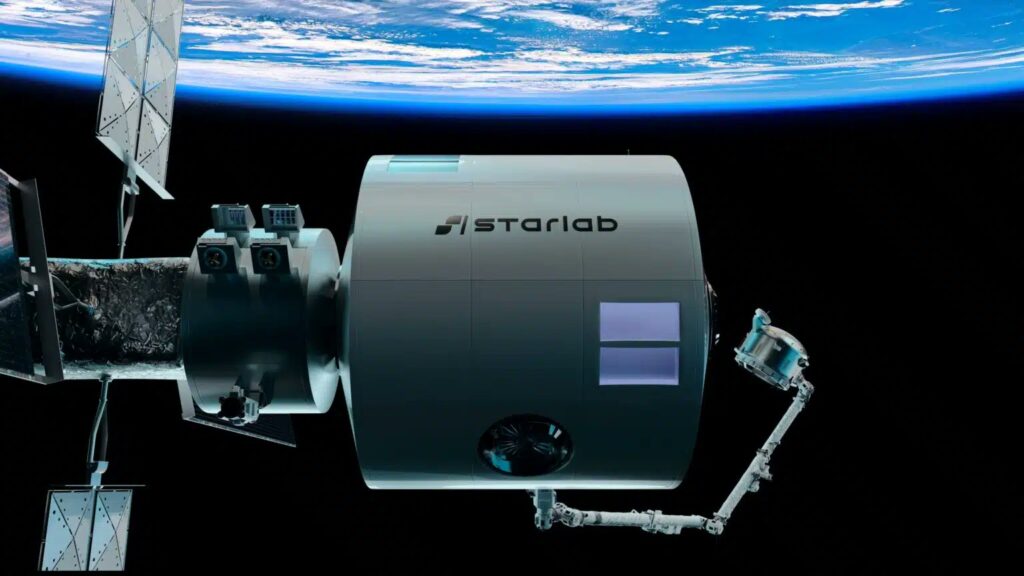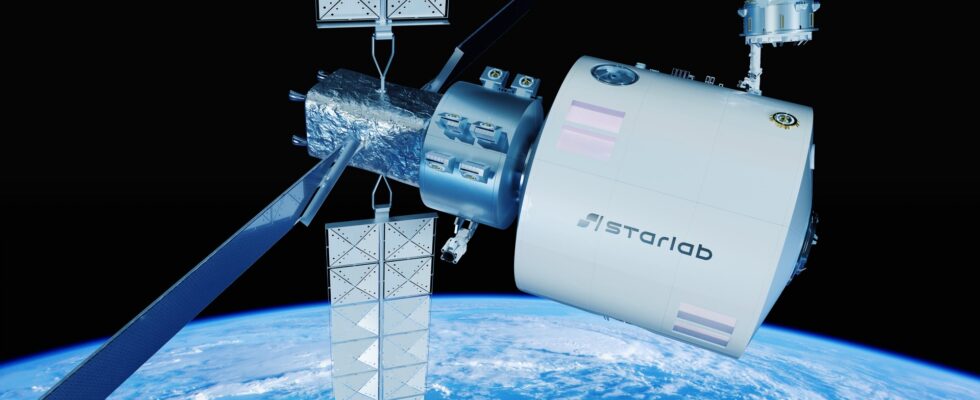An agreement has been signed between SpaceX and Starlab to deploy a private space station within a few years. It will be the immense Starship launcher which will be mobilized to accomplish this task.
Forget the International Space Station (ISS). The future of housing in low Earth orbit will belong to the private sector. In any case, this scenario became a little more concrete with the announcement of an agreement between SpaceX and Starlab, a joint venture between Voyager Space and Airbus. The goal ? Deploy a private space station near Earth.
“ We are excited to announce that we have chosen SpaceX’s Starship to launch Starlab into low Earth orbit “, threw the American company on January 31. “ The Starship will radically change the way we access space, with entire space stations like Starlab launching in a single mission “, added SpaceX.
Starship is the future generation of rocket that SpaceX is currently building. It is now being designed and tested – two test flights took place, but which ended prematurely. A third flight is hoped for in February, at an undetermined date. The rocket must leave Texas to reach Hawaii an hour and a half later.

Starship is a monumental rocket, which belongs to the category of super heavy launchers. It measures 131 meters, is 9 m wide, weighs 5,000 tonnes and is made up of two stages — the Starship on top (it’s a spaceship, and it also has that name) and the Super Heavy on the bottom (the first stage, which provides main propulsion during takeoff).
A Starlab flight expected around 2030
Given the current state of development of the Starship, we should not expect to see the Starship transport the Starlab before the end of the 2020 decade. Especially since NASA has priority needs: the American space agency wants the Starship will be ready in 2026 for a mission to the Moon, with Artemis III: to shuttle between lunar orbit and the ground.
De facto, this still leaves SpaceX years to refine its launcher and make it fully operational. The same goes for Starlab, a project which is supported by Northrop Grumman, a defense and aeronautics giant in the United States, but also the Ohio State University and the European Space Agency.
In order to avoid any disruption in human presence in low Earth orbit, the objective is to achieve deployment of Starlab before the retirement of the ISS, expected from 2030. Unless further extension, the Space Station international will be thrown into the ocean, to the farthest place from any land.


It is planned that this private space station can accommodate up to four crew members at all times. On this occasion, it must offer space agencies, scientists and companies the possibility of carrying out scientific work and experiments in microgravity conditions.
Another advantage of the Starlab, according to its prospects: the station can be launched in a single flight, fully equipped – the Starship will however not be too much to accommodate a relatively bulky structure. Among other things, we are talking about a diameter of 8 meters, compared to around 4 for that of the ISS modules.
The Starlab, on the other hand, will be less extensive than the ISS. It must have two modules, as well as solar panels outside. One of the modules will manage services and energy, the other will concern housing and scientific research. The volume available in the Starlab is expected at 450 m3or half of the ISS (900 m3).
If NASA distributes funding for station projects in order to project itself into the post-ISS era, the participation of Airbus and the European Space Agency allows Europe to maintain a foothold in low Earth orbit. A way to get industrial feedback, but also to obtain places to board Starlab.
If you liked this article, you will like the following: don’t miss them by subscribing to Numerama on Google News.
